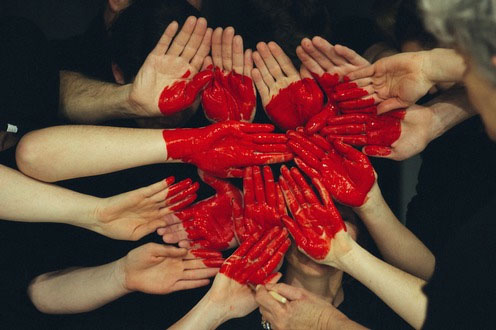SEVERAL research teams writing in the journal Radiology suggest that blood clots play a significant role in why some people become seriously sick with Covid-19.Blood clots may lead to serious complications in some people with severe Covid-19.The death toll from Covid-19 continues to rise daily. But how SARS-CoV-2, the new coronavirus that causes the disease, actually causes death remains poorly understood.Clinical reports show that people with severe Covid-19 develop pneumonia, acute respiratory distress syndrome, and multiple organ failure.Age and underlying medical conditions are factors that increase a person’s risk of severe disease.Thrombosis, embolism, Covid-19Blood clotting is a natural mechanism in response to an injury. However, when a blot clot forms within a blood vessel, it can restrict blood flow. Known as a thrombus, it can lead to severe medical emergencies.
If a thrombus breaks free and travels to another part of the body, doctors call it an embolus. If an embolus reaches the lungs, brain, or heart, the ensuing embolism can become life-threatening.
But why would thrombi and emboli be an issue in Covid-19? The SARS-CoV-2 virus can infect cells in the lung. In severe cases, this leads to inflammation in the lungs and shortness of breath.
Yet, how breathlessness or impaired pulmonary ventilation progresses to death is not entirely clear.
“Worldwide, Covid-19 is being treated as a primary pulmonary disease,” explains Professor Edwin van Beek from Queens Medical Research Institute at the University of Edinburgh in the United Kingdom. “From the analysis of all available current medical, laboratory, and imaging data on Covid-19, it became clear that symptoms and diagnostic tests could not be explained by impaired pulmonary ventilation alone.”
Prof van Beek is the senior author of one of the papers in Radiology. Along with a team of experts, he reviewed whether blood clots might play a role in Covid-19.
Viral infections can activate the blood clotting pathway. Experts believe that this process evolved as a mechanism to limit the spread of a viral infection.
Evidence of pulmonary embolism
Radiology has also published a research letter written by a team from Centre Hospitalier Universitaire de Besancon in France. The group reports that 23 out of 100 patients in the hospital with severe Covid-19 had signs of pulmonary embolism, which is a blood clot that has traveled to the lung.









